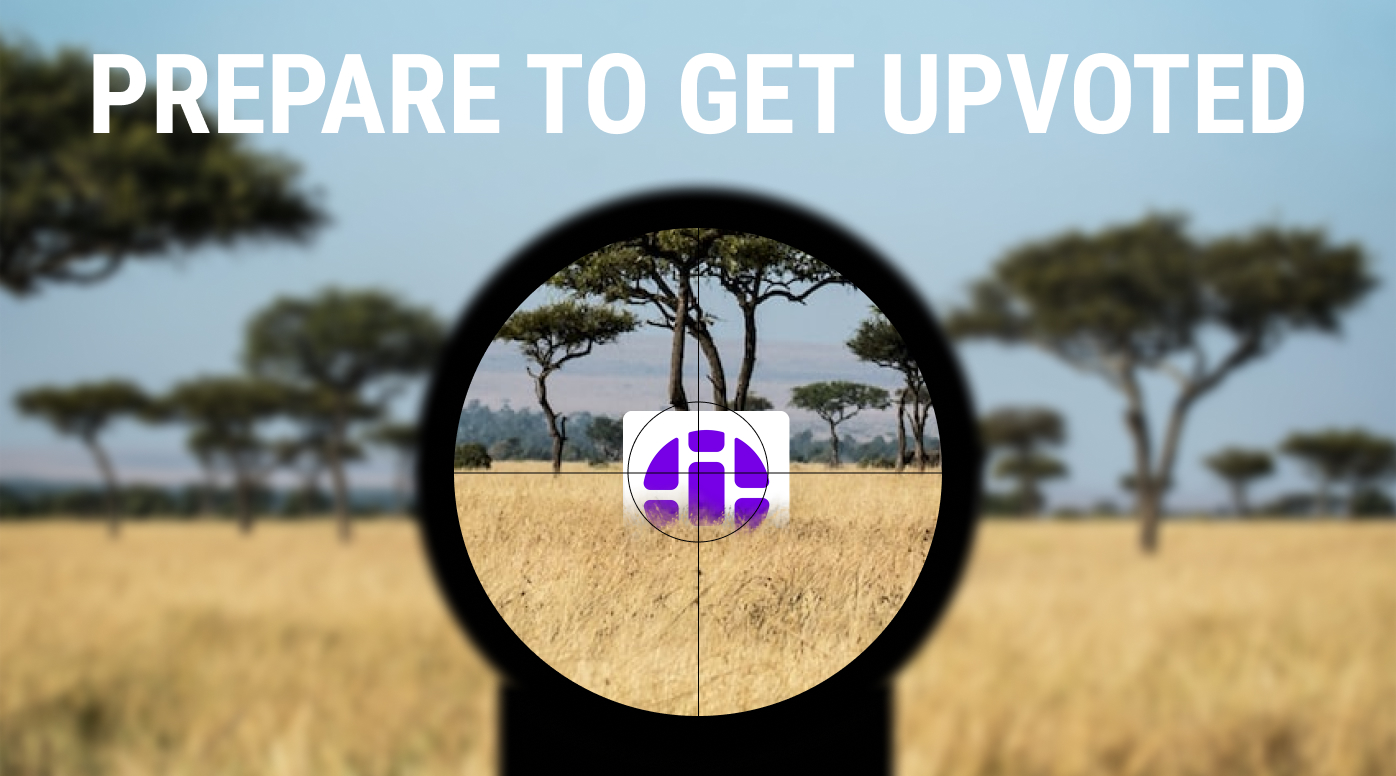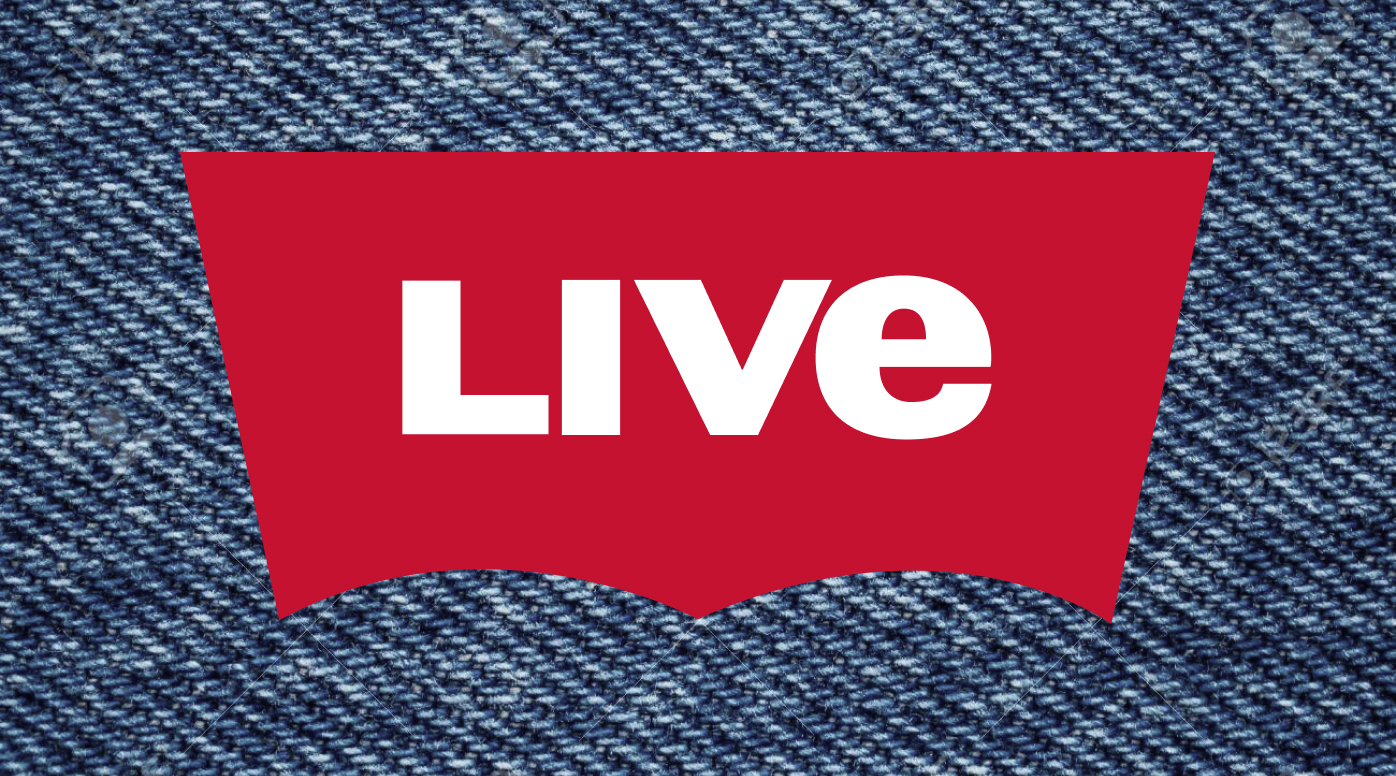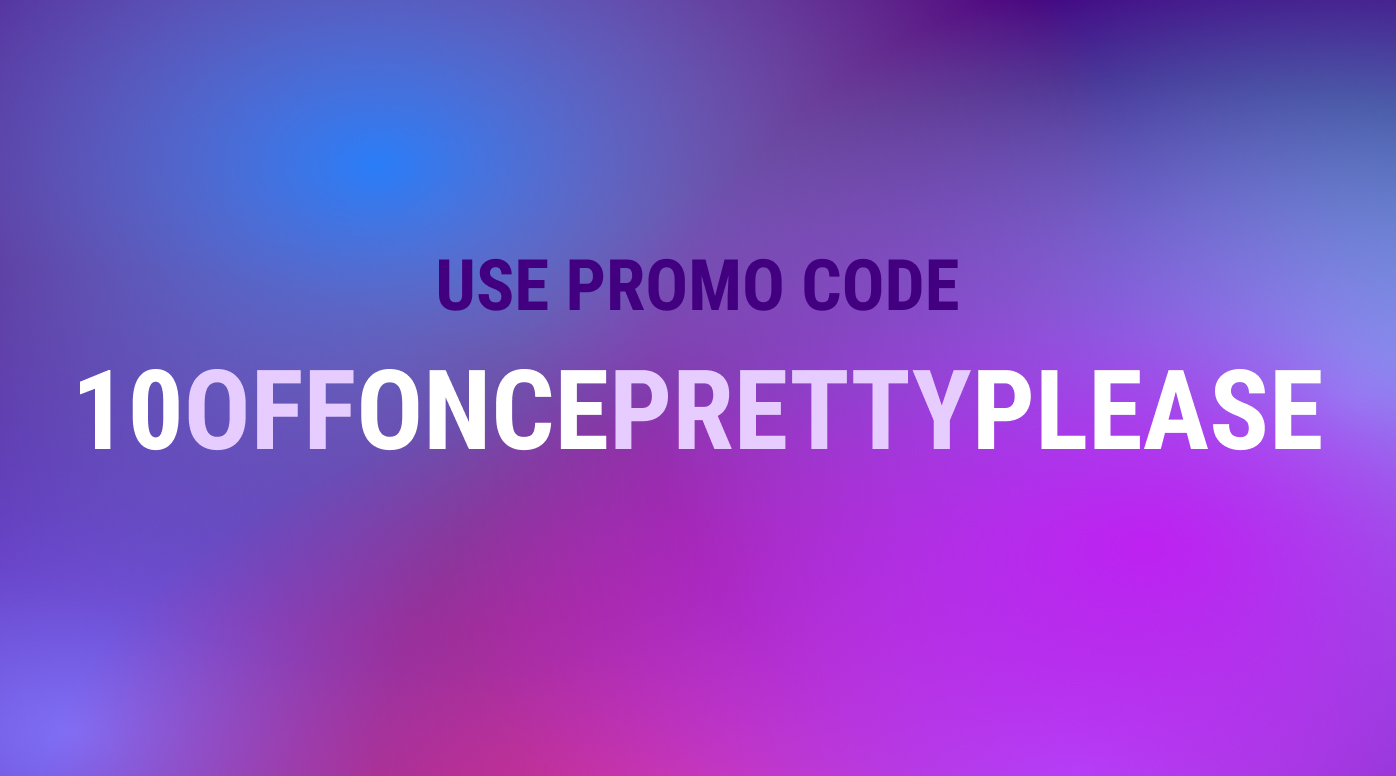If you have worked in startups, especially early stage ones, you have heard of Product Hunt. It started as a community-based platform where companies or individuals could launch their digital products in order to receive feedback from an informed audience as well as potentially earn a jolt of early traction as they are exposed to a community of technology professionals and enthusiasts. Much like Reddit, there is an upvoting system and a daily competition where every product is competing to be named Product of the Day. A “hunter” would comb the site for products they liked and then publicly endorse a maker’s product. Today, well it’s a little different.
For starters, the largest software companies, both in terms of revenue and/or funding, use Product Hunt as a free opportunity to promote their latest product or feature update. And they absolutely should. It does feel different though, especially as we went through it, from the version that was launched years ago.
Hunters still exist, but you don’t need one in order to launch anymore. You can hunt yourself, but it is believed that it is still helpful to get a well-received Product Hunt Hunter to promote your product. In our case, we were lucky enough to have Ben Lang, Head of Community at Notion, hunt us.
When we launched on February 22, we did so with over 500 individual products. While most of them were side projects, it was still surprising for us to see the high number of software products being launched each day on this site. Our launch day included competing with the likes of Notion ($10 billion valuation), Bitski ($23 million funding), Contra ($44 million funding) and YC- and Sequoia-backed Cococart.
Our goal for our Product Hunt launch was twofold. We wanted to make the top 10 products list because that meant we would be featured the next day in the Product Hunt newsletter to hundreds of thousands of subscribers and we wanted that extra promotion of our new website redesign. Secondly, we wanted to drive installs and see how a more technical audience responded to our product.
Since Reactive is used by ecommerce companies, we knew Product Hunt’s audience would be different from who we normally engage and we wanted to see what that conversation looked like. Successful launches on Product Hunt typically are design tools, productivity apps and browser extensions. As a B2B SaaS company who lives in the direct-to-consumer ecosystem, an opportunity to hear about the tech itself was going to be great for us.
Prior to the launch, our team spent time preparing all assets we needed to be successful. This included:
- Creating an animated GIF of our logo
- 6 gallery images
- Creating all relevant copy for our launch
- Writing our founder comment to introduce Reactive
- A promotional offer to incentivize individuals to download and try Reactive
- Doing outreach with customers, colleagues, and our personal networks to inform them of our launch and requesting support and feedback
Here is a brief timeline of how our launch day went:
- At 12:01 am PST, our launch was live.
- At 3:00 am PST, we had 14 votes and were ranked in the top 50 products.
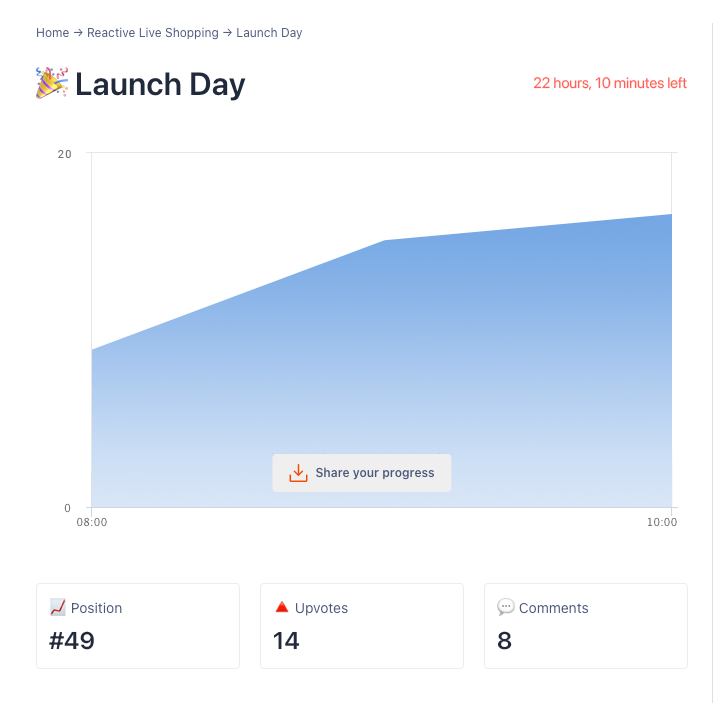
- At 11:00 am PST, we had 90 votes and were sitting in 16th place.
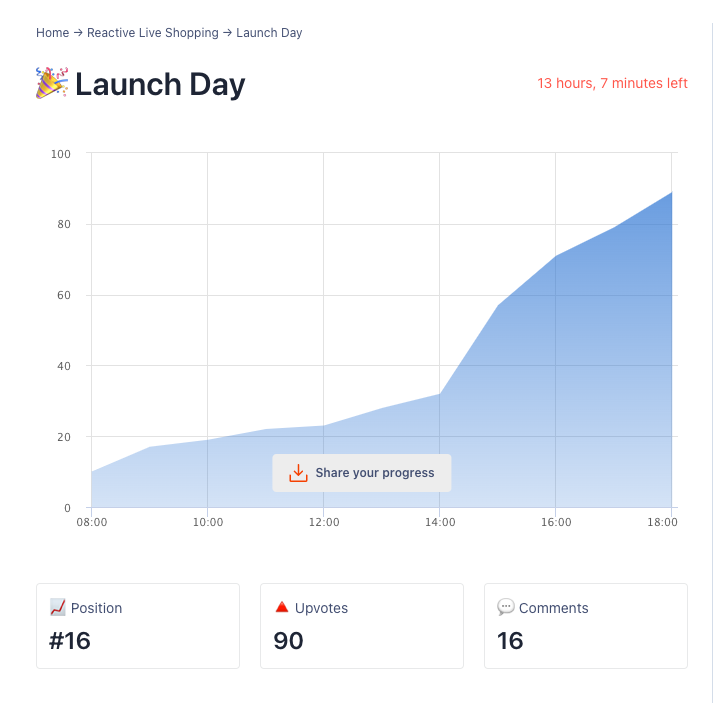
- At 1:00 pm PST, we had 134 upvotes and had passed Cococart and Notion’s launches.
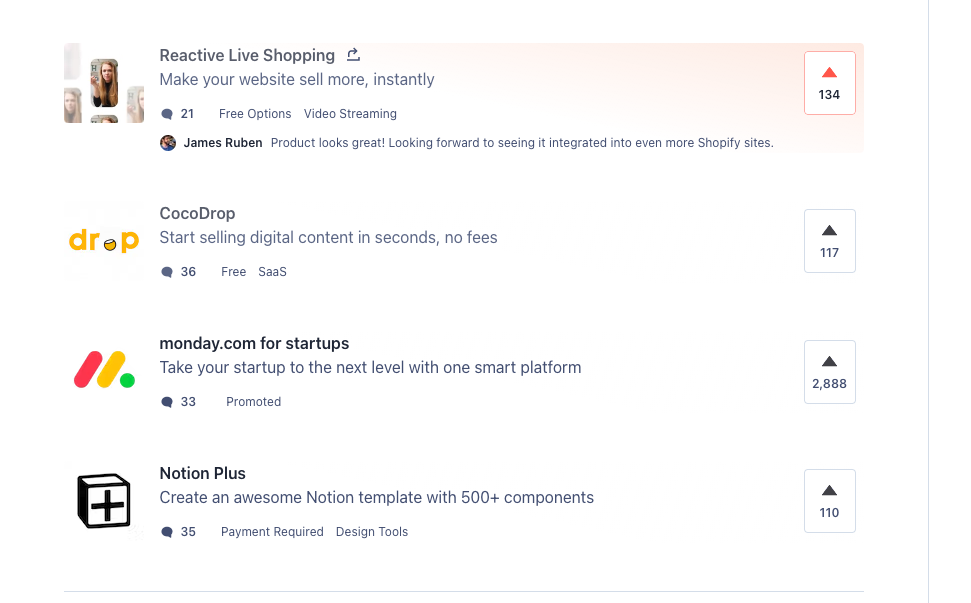
- At 3:00 pm PST, we had moved into 13th place with 167 upvotes.
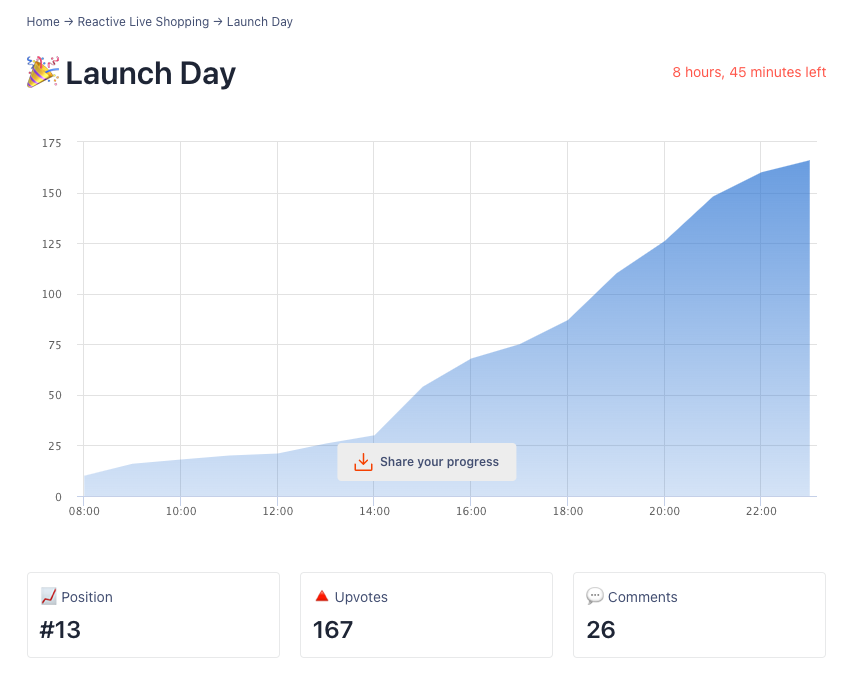
- At 5:00pm PST, we had cracked the top 10 with 191 upvotes.
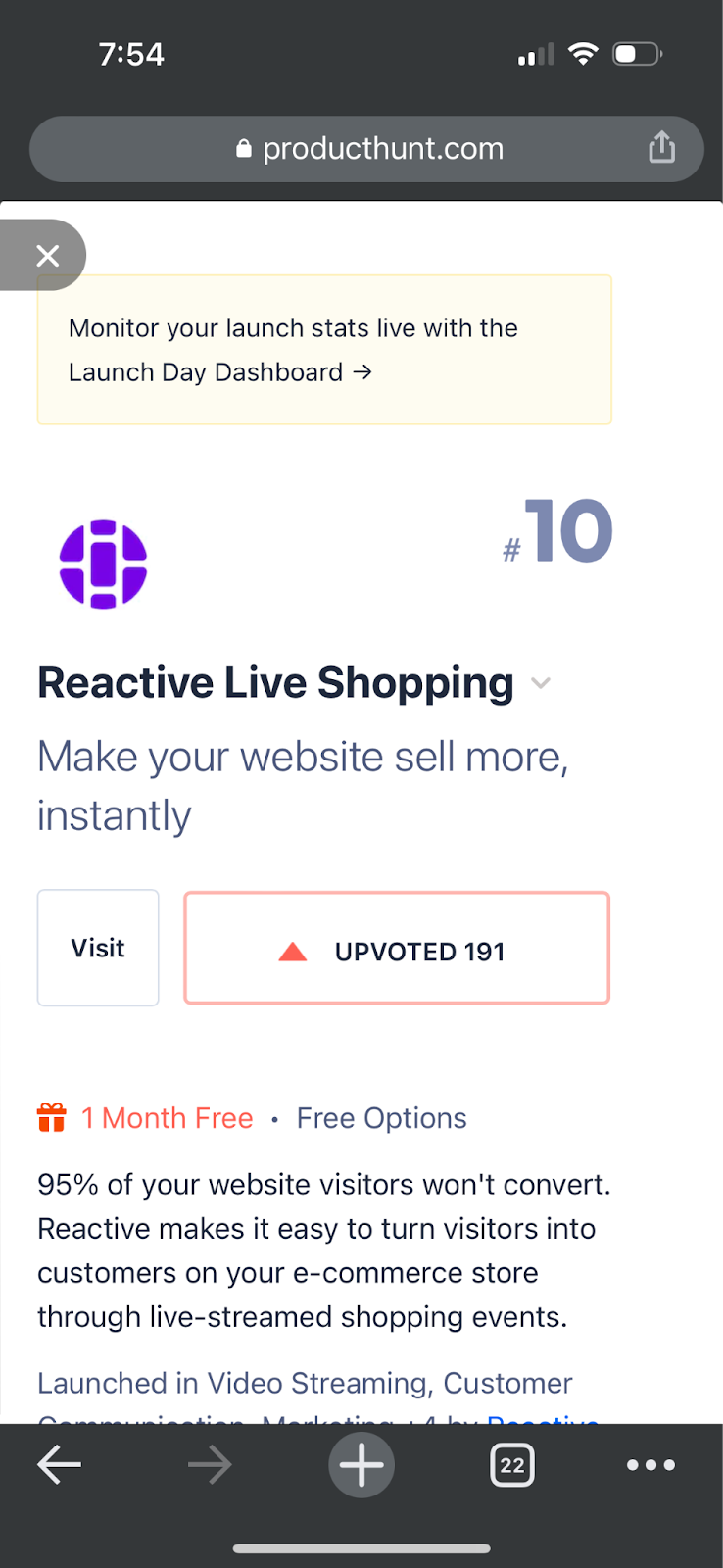
- By 8:00 pm PST, we reached our highest ranking of #7 with 222 upvotes.
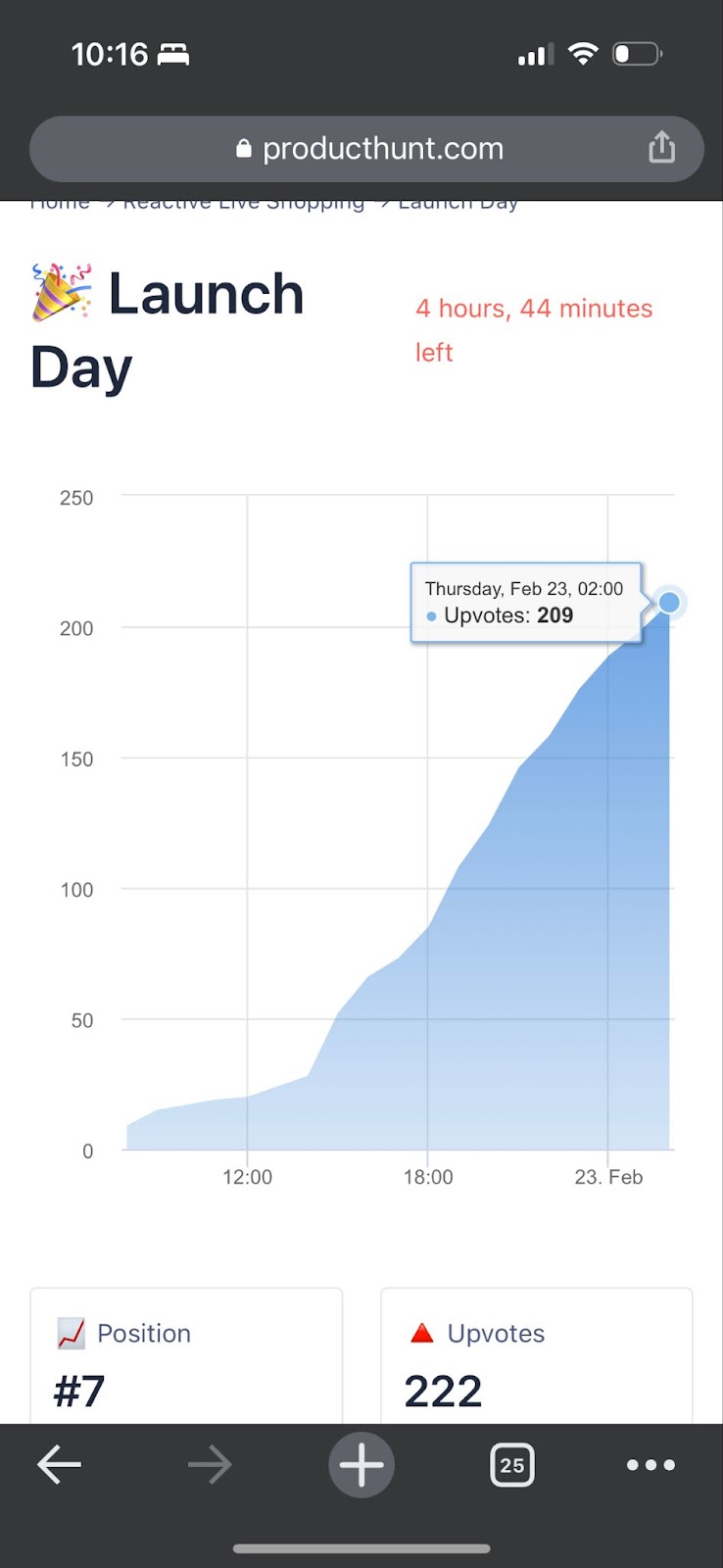
- By end of day, we had earned the #8 spot with 258 upvotes
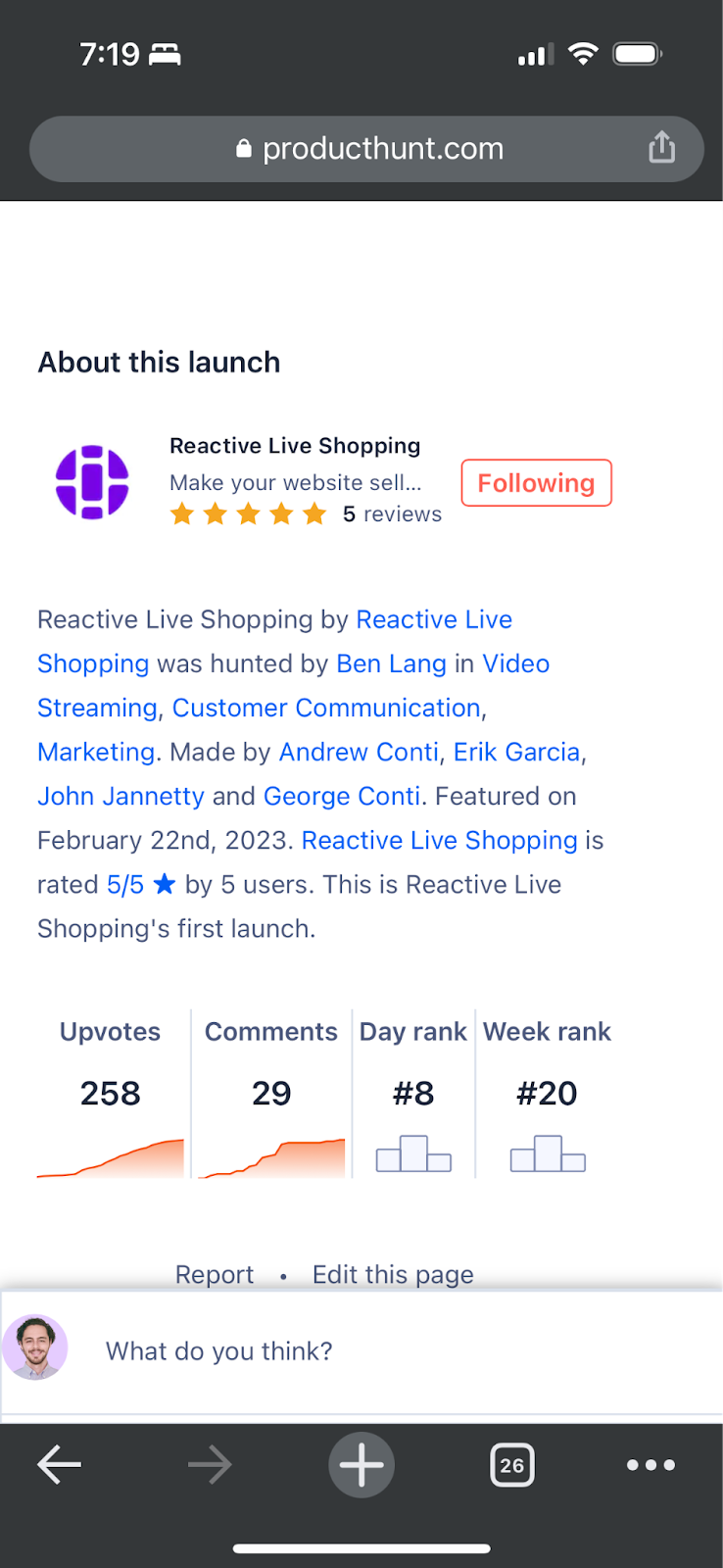
What impact did this have for us? Let’s share info on how web traffic was affected. Some stats:
- 83: Number of daily users two days before before being featured on Product Hunt
- 219 : Number of users on February 22nd (launch day) (356% increase in traffic)
- 240: Number of sessions on February 22nd
- 171 : Number of users one day later (30% drop from the day before but more than our users before the launch)
- 80: Number of users two days later (53% drop from the day before)
- 83: Daily sessions three days later (50% drop from the day before)
- 7: Top rank on Product Hunt
- 10: Installs that day
- 14: leads secured on our website
5 takeaways from our launch:
-
Hunters aren’t impactful or necessary
We were lucky to be hunted by one of the top recognized hunters on Product Hunt, but we saw no uptick in exposure or upvotes. If you do find a hunter, definitely find one who will promote it to their Twitter following.
-
Momentum is important, but consistent growth matters
Many Product Hunt guides share how getting out ahead is important because it gets you on the home page quickly. That was certainly true in our case as we did not start quickly, but we started closing the gap over the course of the day as our upvotes accelerated.
-
Upvote fraud is real
Every member of our team was emailed directly by an individual or service who offered to secure more upvotes if we paid for it. Some even had websites. It must be purchased by enough companies if these individuals were so deliberate in who they offered their service to.
-
There is a correlation between makers who have social followings and launch success
While the Reactive team is full of experienced professionals, none of us have ever been good about being on Twitter. We probably should be, and our Product Hunt experience validated that. Teams with makers who had Twitter followings of at least 1000’s or teams who had a hunter share their launch did significantly better than those who did not have that type of audience.
-
Product Hunt is a popularity contest, not a science fair
The initial Product Hunt was a fantastic opportunity to get beta users who could provide real feedback or offer an invaluable insight. Today, it was clear that certain makers had created strategies to heighten engagement and attract the PH algorithm by having targeted users make comments that were clearly scripted or didn’t make sense. A top-performing internal dev product that day was littered with comments like “amazing product,” “it’s a great tool” and other comments that did not ask relevant questions or provide any specific detail that showed they had tried out the product.
Did we have fun with this launch? Absolutely! Any chance you have to talk about your product or company where people are paying attention is a dream come true. Would we do it again? We probably would, but perhaps with less time expended on it. The reason is that our target customers are not on Product Hunt. That’s just a fact. Also, we wish the daily launches were all done so in compliance with the rules of Product Hunt. There’s clearly fraud going on, but there’s only so much Product Hunt can do to prevent it.
It’s the same issue Instagram has with companies or individuals paying for fake followers or companies paying for fake reviews on Amazon and all the app stores. At the end of the day, it's our responsibility to play fair. If the system allows for you to play unfairly with little to no retribution, we can’t argue with the logic that such tactics are fine if it’s good for the overall success of a company. It’s just not the way we want to win, and that’s fine with us. It was great to be a part of a day where there was an abundance of creativity, passion and hard work.
We wish all our fellow startups success as we all try to solve problems and build valuable products. We all do not need Product Hunt to achieve that.
If you are interested in bringing a live selling experience to your website, check out Reactive. Start your free trial now, or contact sales@reactive.live to request a live demo.
